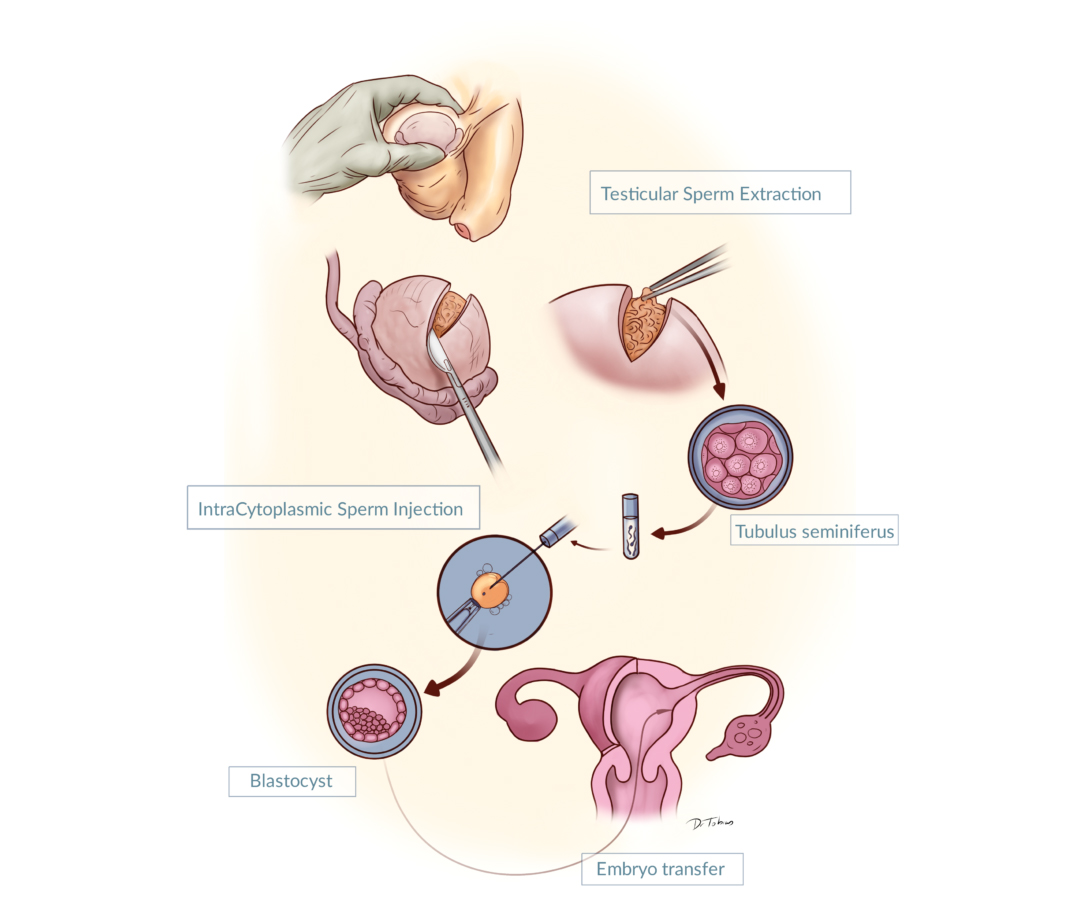Infertility is defined as the inability of a couple to achieve a spontaneous pregnancy within a year despite regular intercourse without contraception. Male infertility refers to situations where the lack of pregnancy in the female partner can be attributed to male factors.
How common is male infertility?
Male infertility is a common phenomenon. Currently, about one in every seven couples do not achieve pregnancy within one year and therefore seek medical treatment for infertility. In about half of these cases, a male factor is identified.
What are the symptoms of male infertility?
Most infertile men do not have any physical symptoms. Infertility can, however, be a substantial psychological burden, both for the couple and, in cases of male infertility, for the man himself.
What are the causes of male infertility?
Male fertility generally depends on the quality and quantity of the sperm cells, and the ability of these sperm cells to reach and enter the egg inside a woman. In infertile men, one or more of these factors are compromised.
Causes of male infertility are multiple and include:
- Undescended testes or a history of undescended testes
- Malignancies
- Infections in the urogenital tract, including sexually transmitted diseases
- Varicocele
- Hormone imbalance
- Hypogonadotropic hypogonadism
- Genetic abnormalities
- Immune factors or immune disorders
- Vasectomy or other obstructive factors of the seminal ducts or the prostate
- Erectile dysfunction
- Hypospadias
- Retrograde ejaculation
- Aging
- Idiopathic (unidentifiable reason)
Whereas some of these causes interfere with the quantity and quality of the sperm cells (e.g. undescended testes and some genetic abnormalities), other causes are related to the ability of the mature sperm cells to reach the female genital tract (e.g. vasectomy and retrograde ejaculation).
When should I consult a doctor?
If your partner is <35 years, and the two of you have had a sex life without the use of contraception and with regular intercourse during the fertility window of your partner for at least 12 months without her getting pregnant, you and your partner should see a doctor.
If your partner is >35 years, and the two of you have had a sex life without the use of contraception and with regular intercourse for at least 6 months without her getting pregnant, you and your partner should see a doctor. The shorter ‘waiting’ time in couples where the woman is above 35 years enables a sooner initiation of assisted fertility treatment, if needed, which is specifically relevant in these couples considering the age-related decline in female fertility.
If you are aware that you have a particular risk of being infertile or subfertile, it is a good idea to see a doctor and have your fertility potential evaluated.
How is male infertility diagnosed?
The clinician will ask about your medical history and you will have a physical examination.
You will have a blood sample taken and be asked to deliver a semen sample. Often, the clinician will like to have two semen samples analysed, since the semen parameters may vary.
The semen samples are analysed for total sperm count, sperm concentration, sperm motility and sperm morphology. The blood sample is analysed for relevant hormones, and, in some cases, certain genetic abnormalities.
In some cases, the doctor will make an ultrasound scan of your testes.
In quite many cases, a poor semen quality is documented, whereas no underlying cause can be identified.
Can male infertility be treated?
Whether or not male infertility can be treated depends on the cause of the problem.
About 15% of infertile men have a treatable condition. These include for example some cases of retrograde ejaculation, varicocele, and hypogonadotropic hypogonadism.
Many cases of male infertility are, however, not treatable. These include for example genetic causes, idiopathic infertility, and infertility due to undescended testes. Still, the use of assisted reproductive technologies (ART) can in many cases help a couple overcoming infertility and have a baby, even though it does not treat the infertility per se. There are different kinds of ART, and the approach chosen will depend on the kind and degree of infertility in the specific case, as well as on the female partner’s situation.
In some cases, neither treatment nor ART can overcome infertility.





















